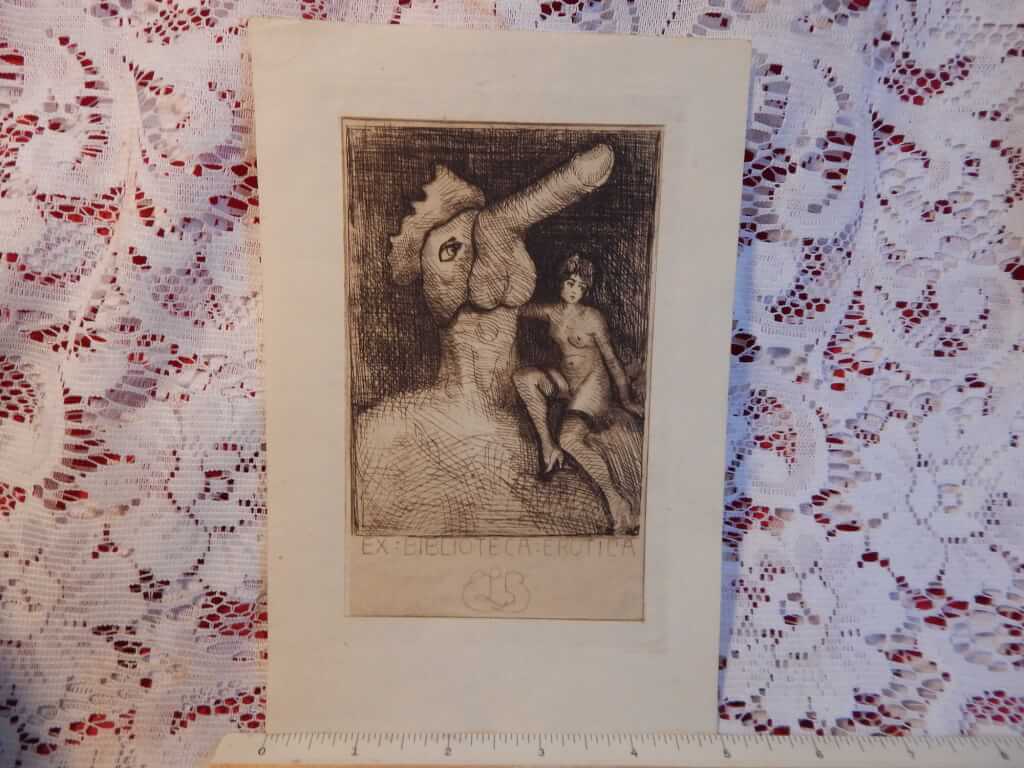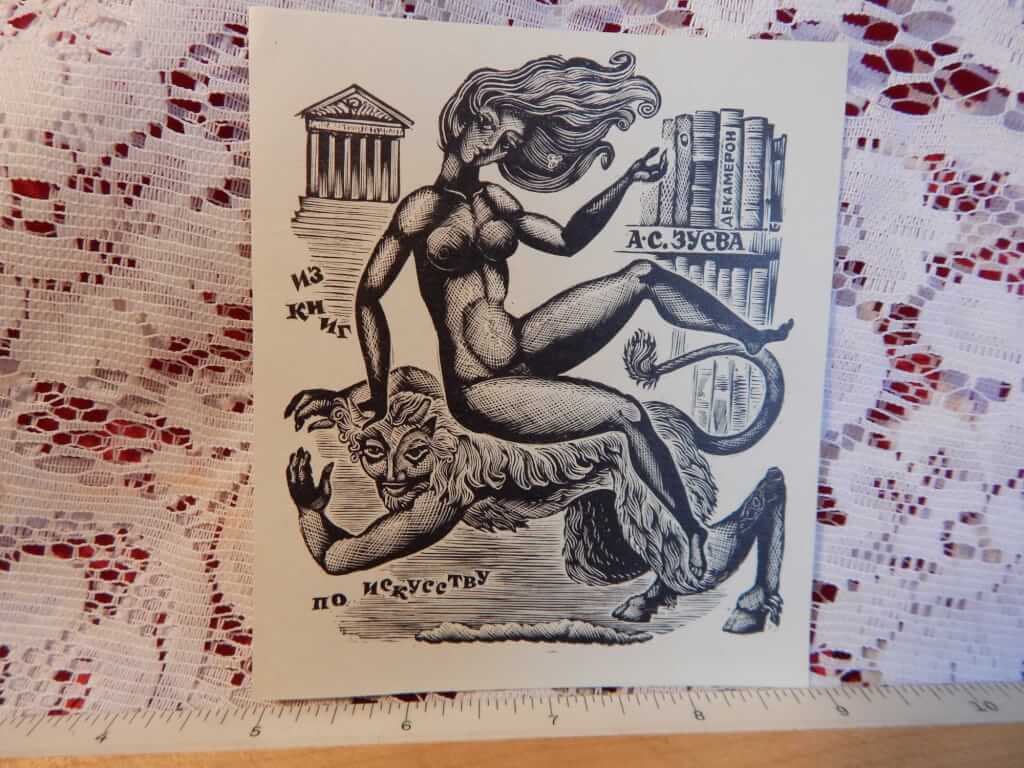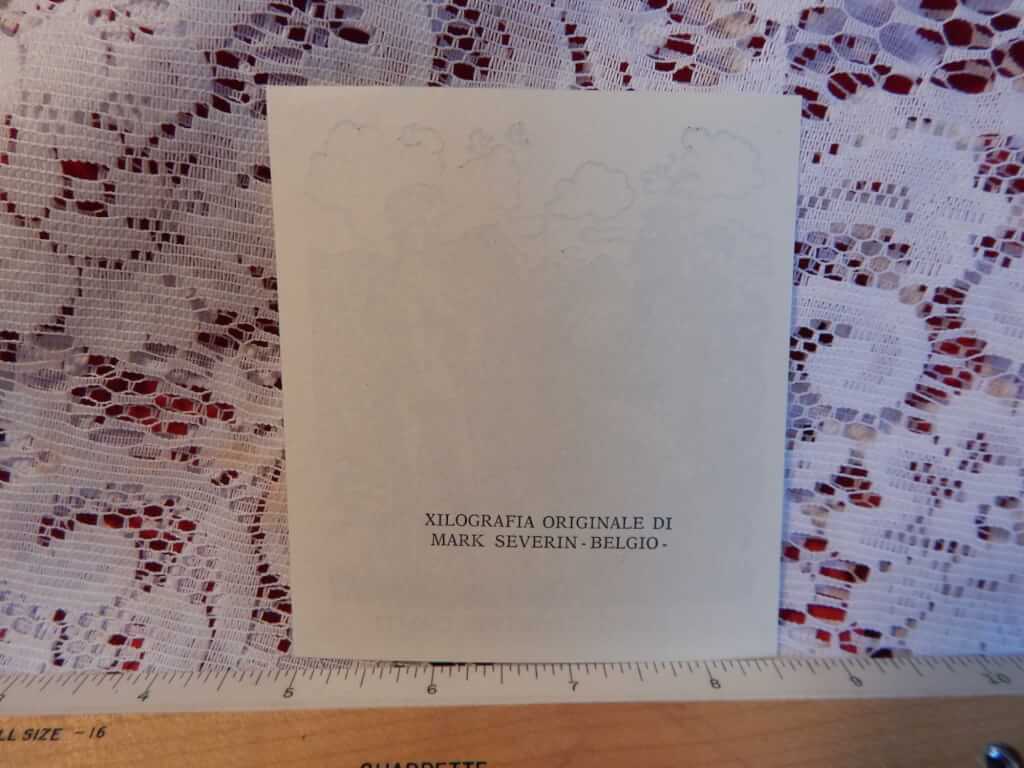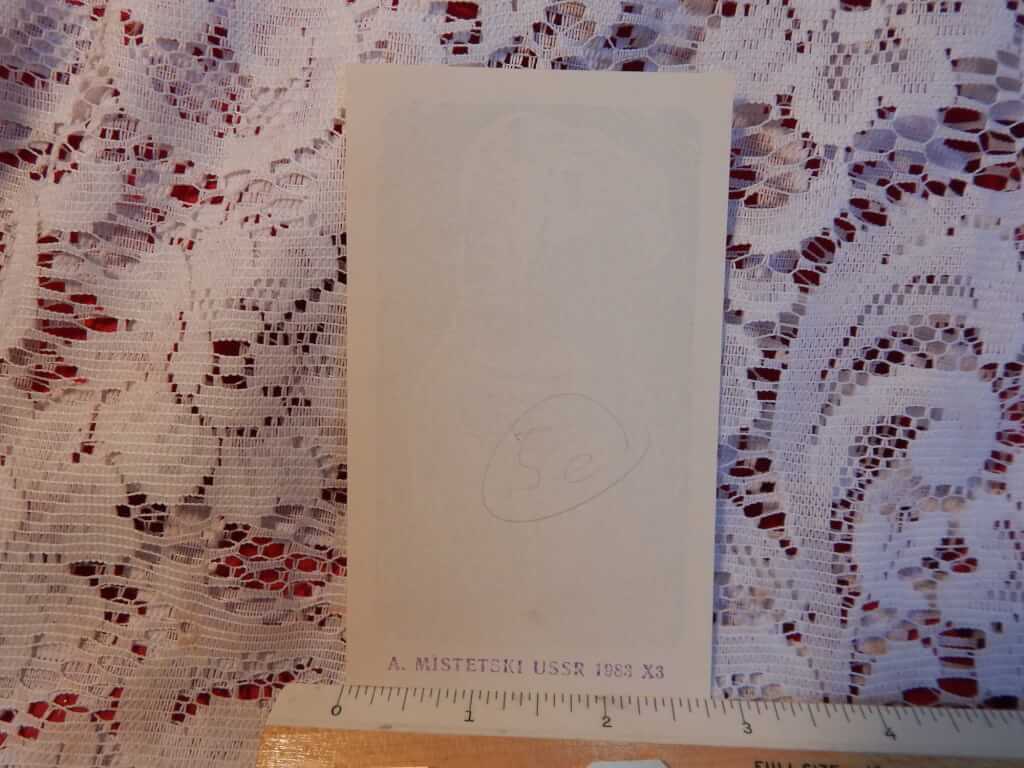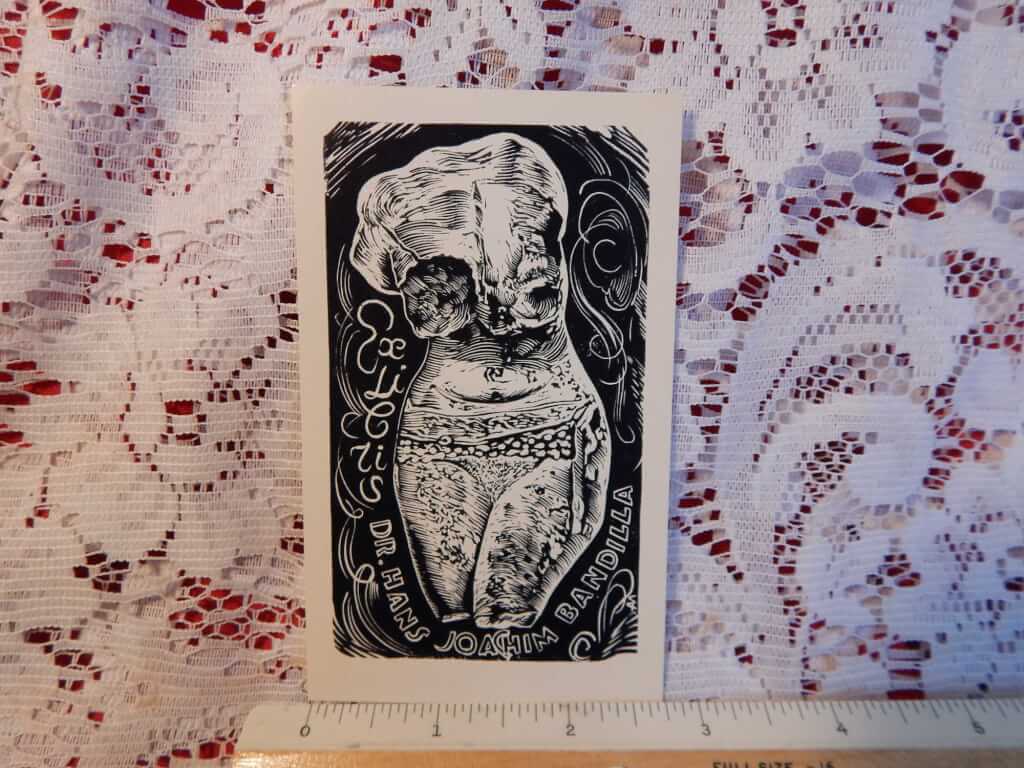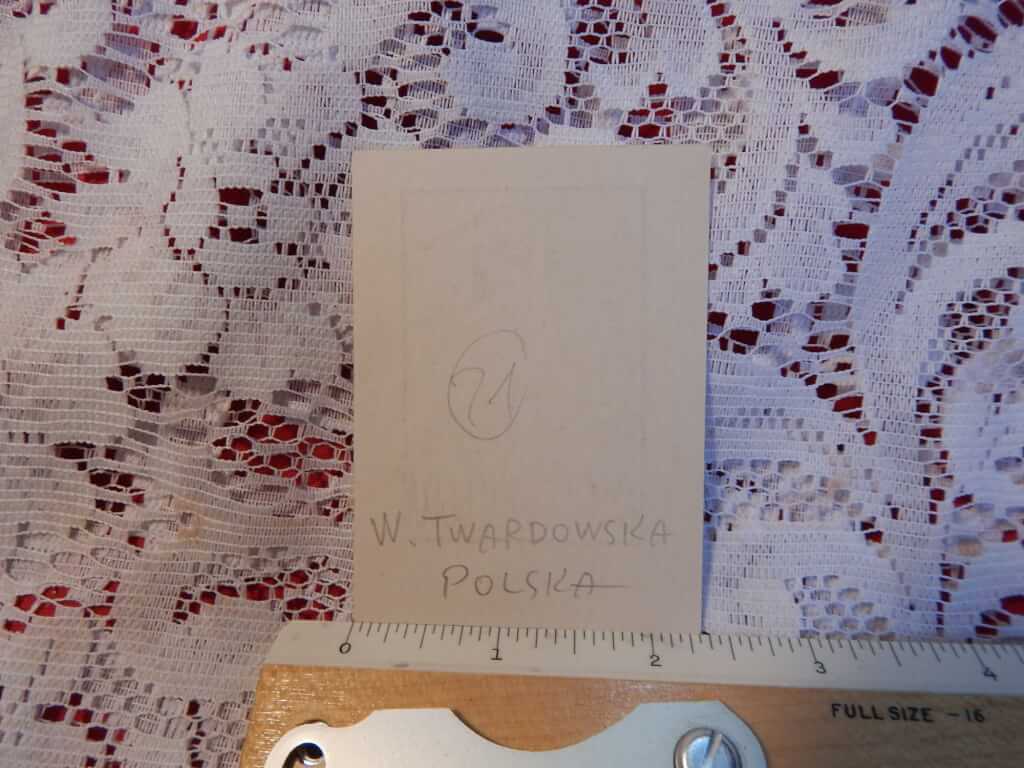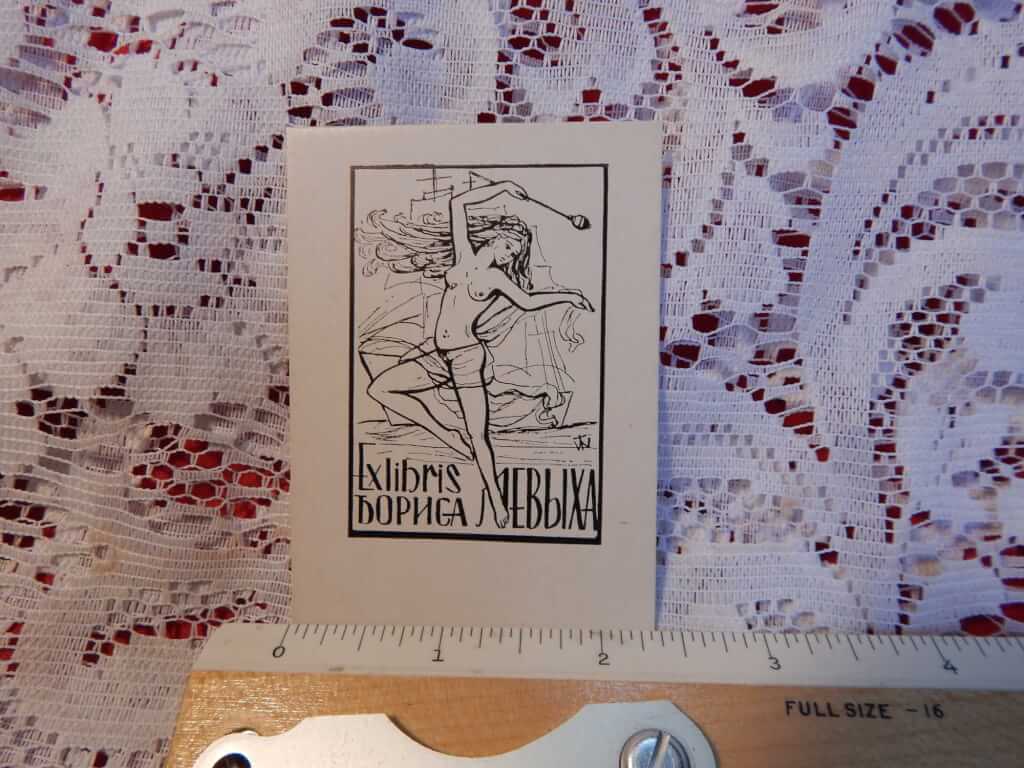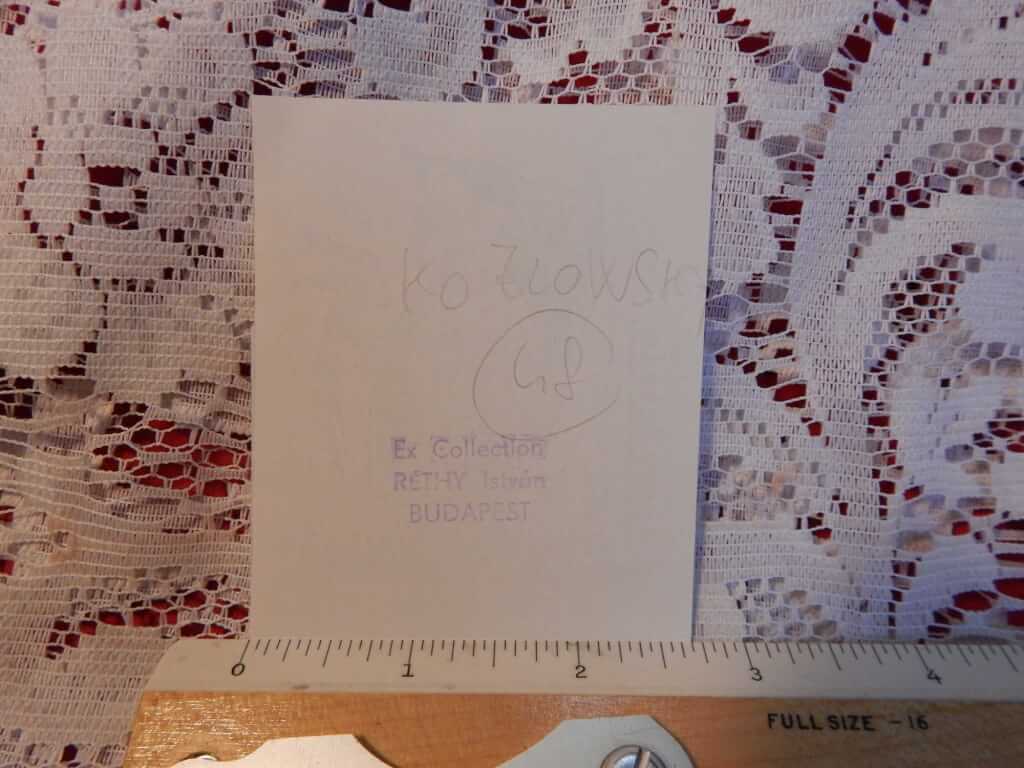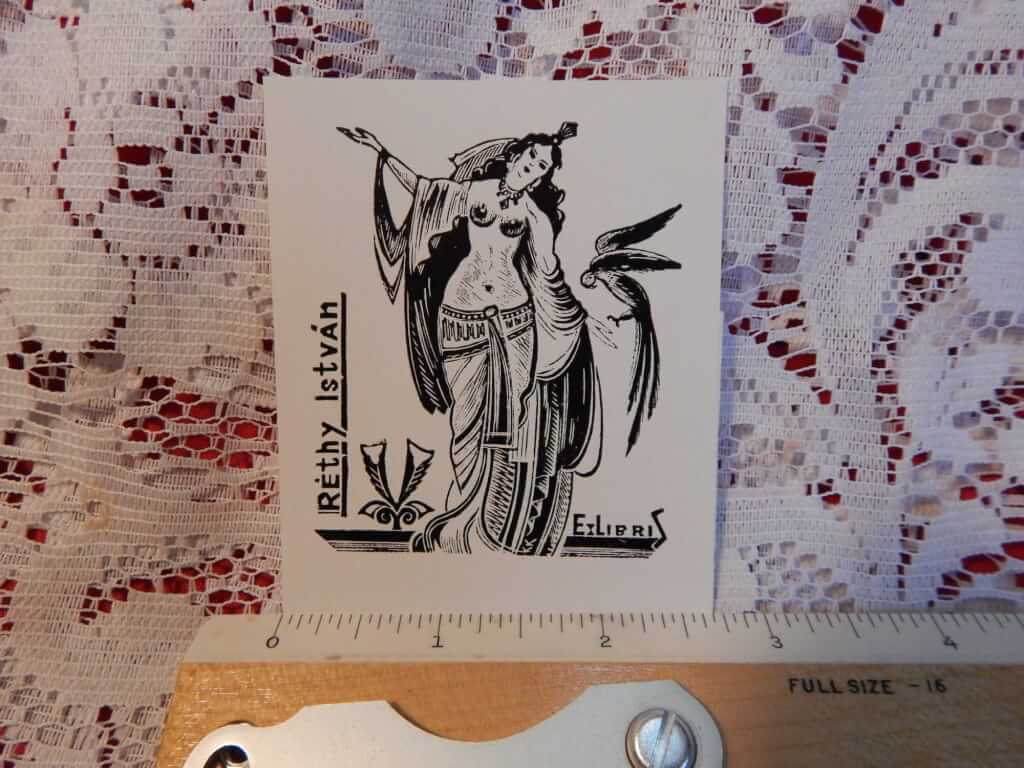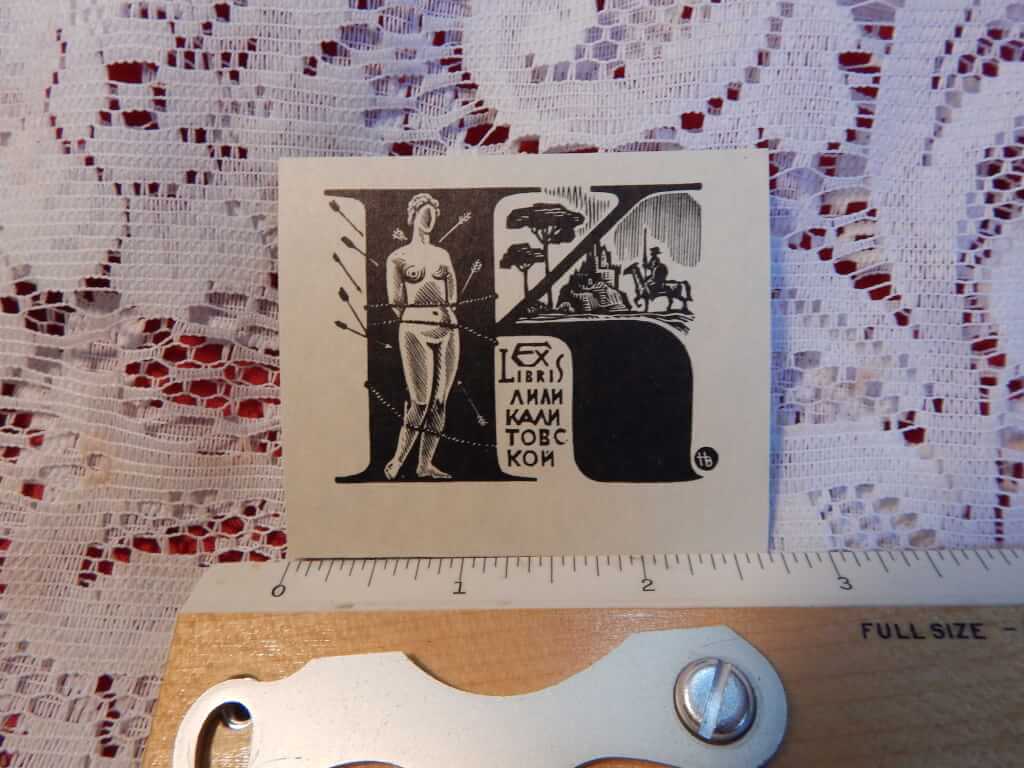-
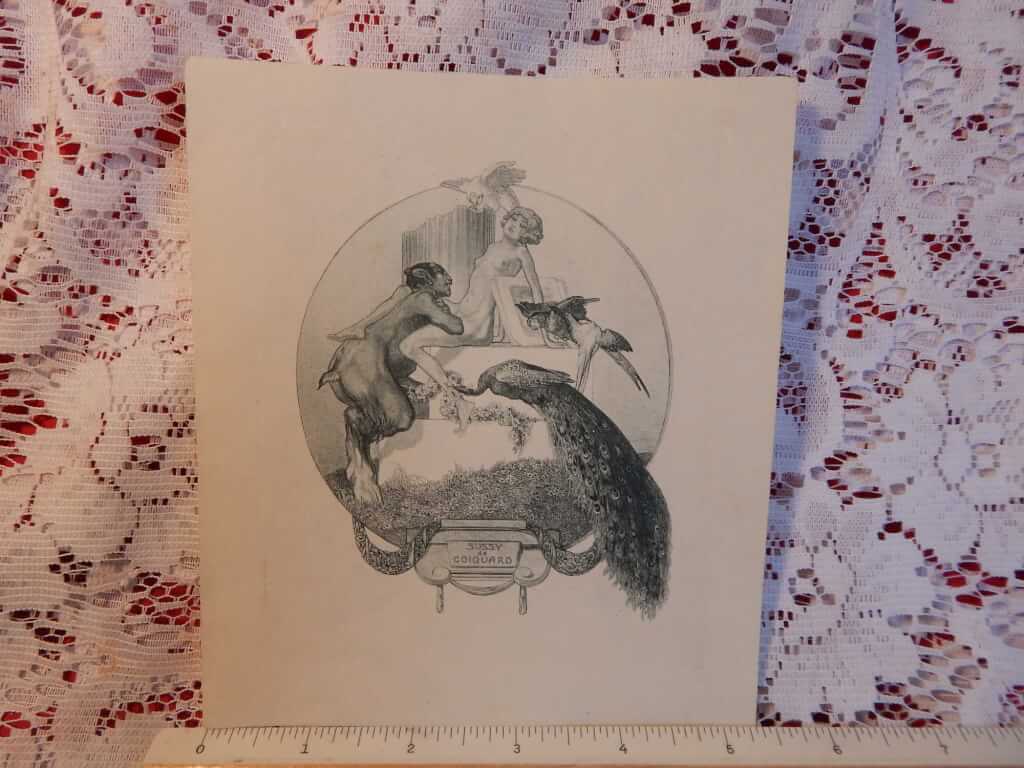 Ex libris Sussy de Coiquard, by Franz von Bayros paper size 5.5 x 6.25", print size 4.25 x 5.25" naked girl entertaining Pan(?), with peacock and other birds Franz von Bayros (1866 – 1924) was an Austrian commercial artist, illustrator, and painter, now he is best known for his erotic work. He belonged to the Decadent movement in art, often utilizing erotic themes and phantasmagoric imagery. At the age 17, Bayros passed the entrance exam for the Vienna Academy with Eduard von Engerth. Bayros mixed in elegant society and soon belonged to the circle of friends of Johann Straub, whose step daughter Alice he married on 1896. The next year, Bayros moved to Munich. In 1904, Bayros gave his first exhibition in Munich, which was a great success. From 1904 until 1908, Bayros traveled to Paris and Italy for his studies. Typically, for an artist dealing with such imagery, von Bayros produced work under several pseudonyms, most notably Choisy Le Conin, and was hounded by authorities for much of his life for his “indecent” art often very imaginative, and including such taboo subjects as sadomasochism and bestiality. He became equally well-known for his masterly drawn figures of elegant modestly nude and non-nude women.
Ex libris Sussy de Coiquard, by Franz von Bayros paper size 5.5 x 6.25", print size 4.25 x 5.25" naked girl entertaining Pan(?), with peacock and other birds Franz von Bayros (1866 – 1924) was an Austrian commercial artist, illustrator, and painter, now he is best known for his erotic work. He belonged to the Decadent movement in art, often utilizing erotic themes and phantasmagoric imagery. At the age 17, Bayros passed the entrance exam for the Vienna Academy with Eduard von Engerth. Bayros mixed in elegant society and soon belonged to the circle of friends of Johann Straub, whose step daughter Alice he married on 1896. The next year, Bayros moved to Munich. In 1904, Bayros gave his first exhibition in Munich, which was a great success. From 1904 until 1908, Bayros traveled to Paris and Italy for his studies. Typically, for an artist dealing with such imagery, von Bayros produced work under several pseudonyms, most notably Choisy Le Conin, and was hounded by authorities for much of his life for his “indecent” art often very imaginative, and including such taboo subjects as sadomasochism and bestiality. He became equally well-known for his masterly drawn figures of elegant modestly nude and non-nude women. -
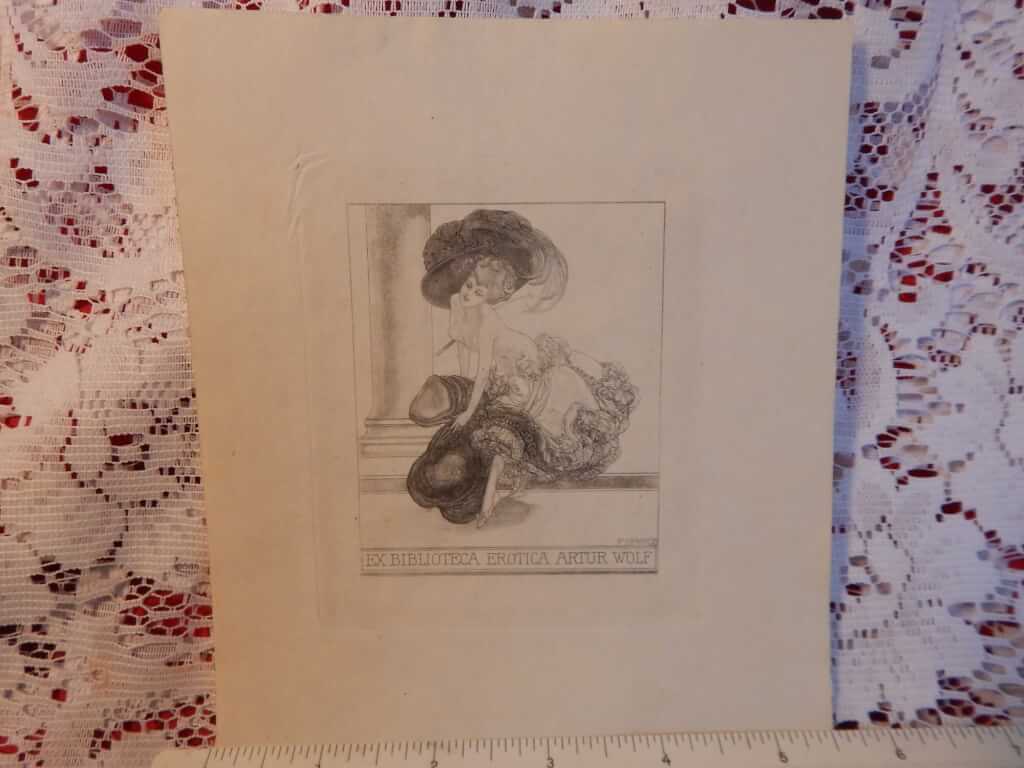 Ex Biblioteca Erotica Artur Wolf, by Franz von Bayros paper size 5.5 x 6.25", print size 3.5 x 4" topless women with large hat and a crop under her right arm, walking(?) a large penis Franz von Bayros (1866 – 1924) was an Austrian commercial artist, illustrator, and painter, now he is best known for his erotic work. He belonged to the Decadent movement in art, often utilizing erotic themes and phantasmagoric imagery. At the age 17, Bayros passed the entrance exam for the Vienna Academy with Eduard von Engerth. Bayros mixed in elegant society and soon belonged to the circle of friends of Johann Straub, whose step daughter Alice he married on 1896. The next year, Bayros moved to Munich. In 1904, Bayros gave his first exhibition in Munich, which was a great success. From 1904 until 1908, Bayros traveled to Paris and Italy for his studies. Typically, for an artist dealing with such imagery, von Bayros produced work under several pseudonyms, most notably Choisy Le Conin, and was hounded by authorities for much of his life for his “indecent” art often very imaginative, and including such taboo subjects as sadomasochism and bestiality. He became equally well-known for his masterly drawn figures of elegant modestly nude and non-nude women.
Ex Biblioteca Erotica Artur Wolf, by Franz von Bayros paper size 5.5 x 6.25", print size 3.5 x 4" topless women with large hat and a crop under her right arm, walking(?) a large penis Franz von Bayros (1866 – 1924) was an Austrian commercial artist, illustrator, and painter, now he is best known for his erotic work. He belonged to the Decadent movement in art, often utilizing erotic themes and phantasmagoric imagery. At the age 17, Bayros passed the entrance exam for the Vienna Academy with Eduard von Engerth. Bayros mixed in elegant society and soon belonged to the circle of friends of Johann Straub, whose step daughter Alice he married on 1896. The next year, Bayros moved to Munich. In 1904, Bayros gave his first exhibition in Munich, which was a great success. From 1904 until 1908, Bayros traveled to Paris and Italy for his studies. Typically, for an artist dealing with such imagery, von Bayros produced work under several pseudonyms, most notably Choisy Le Conin, and was hounded by authorities for much of his life for his “indecent” art often very imaginative, and including such taboo subjects as sadomasochism and bestiality. He became equally well-known for his masterly drawn figures of elegant modestly nude and non-nude women. -
Out of stock
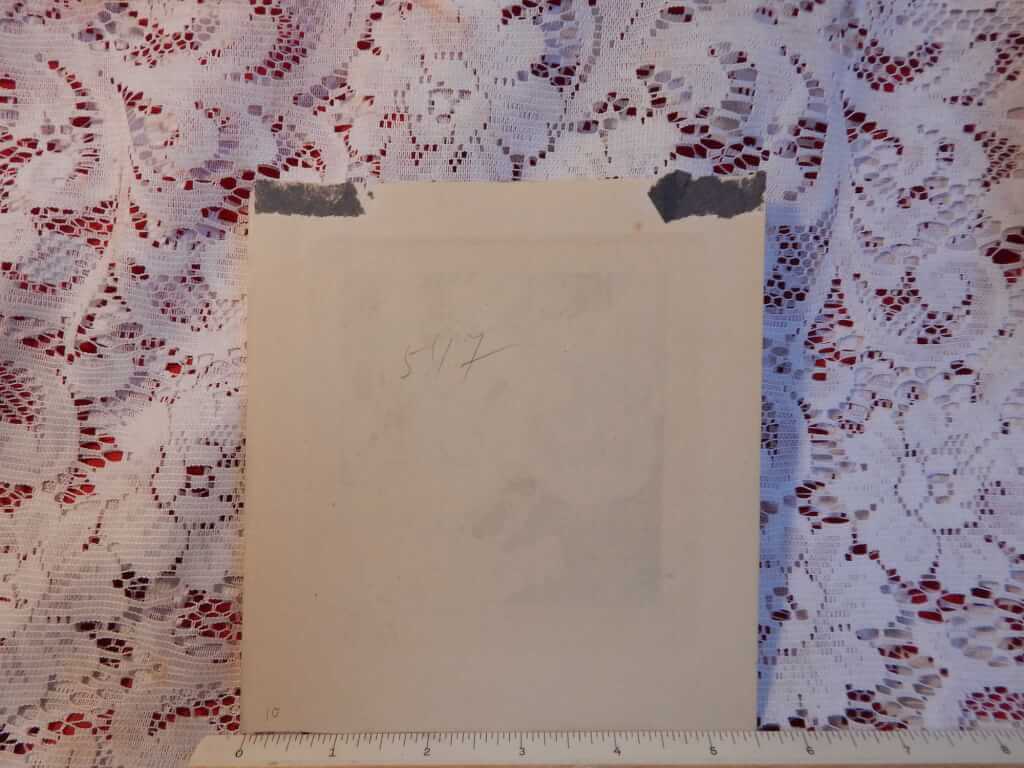
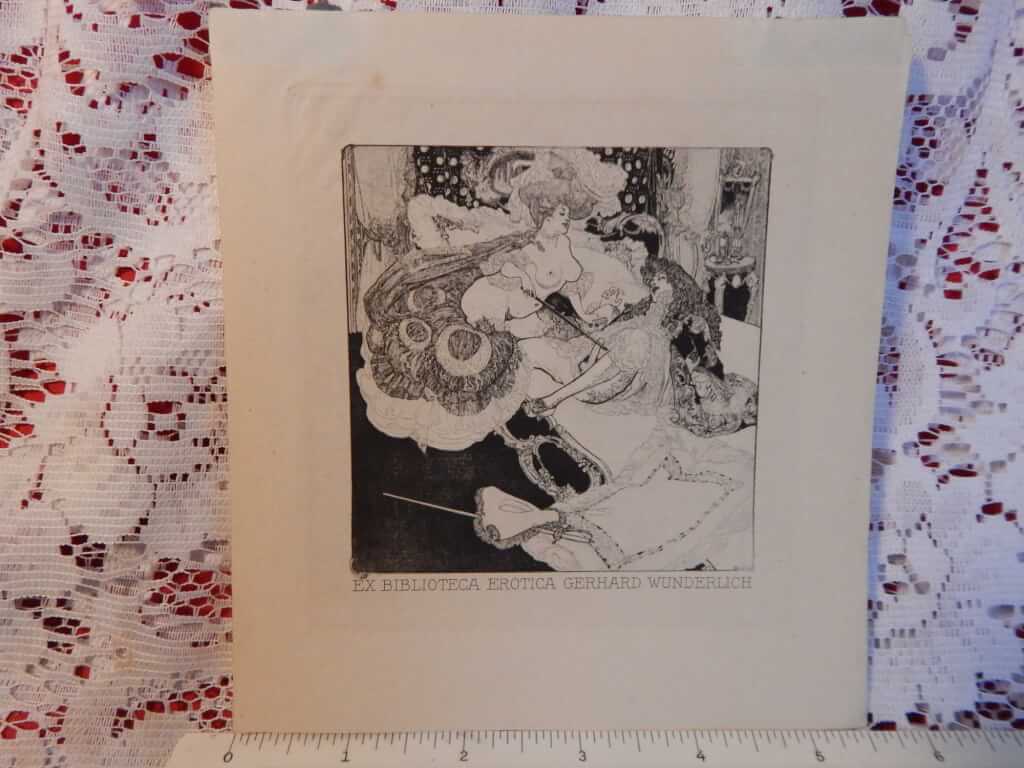 Ex Biblioteca Erotica Gerhard Wunderlich, by Franz von Bayros naked woman with cane, holding it against erect penis, remnants of pastedown at top of back Franz von Bayros (1866 – 1924) was an Austrian commercial artist, illustrator, and painter, now he is best known for his erotic work. He belonged to the Decadent movement in art, often utilizing erotic themes and phantasmagoric imagery. At the age 17, Bayros passed the entrance exam for the Vienna Academy with Eduard von Engerth. Bayros mixed in elegant society and soon belonged to the circle of friends of Johann Straub, whose step daughter Alice he married on 1896. The next year, Bayros moved to Munich. In 1904, Bayros gave his first exhibition in Munich, which was a great success. From 1904 until 1908, Bayros traveled to Paris and Italy for his studies. Typically, for an artist dealing with such imagery, von Bayros produced work under several pseudonyms, most notably Choisy Le Conin, and was hounded by authorities for much of his life for his “indecent” art often very imaginative, and including such taboo subjects as sadomasochism and bestiality. He became equally well-known for his masterly drawn figures of elegant modestly nude and non-nude women.
Ex Biblioteca Erotica Gerhard Wunderlich, by Franz von Bayros naked woman with cane, holding it against erect penis, remnants of pastedown at top of back Franz von Bayros (1866 – 1924) was an Austrian commercial artist, illustrator, and painter, now he is best known for his erotic work. He belonged to the Decadent movement in art, often utilizing erotic themes and phantasmagoric imagery. At the age 17, Bayros passed the entrance exam for the Vienna Academy with Eduard von Engerth. Bayros mixed in elegant society and soon belonged to the circle of friends of Johann Straub, whose step daughter Alice he married on 1896. The next year, Bayros moved to Munich. In 1904, Bayros gave his first exhibition in Munich, which was a great success. From 1904 until 1908, Bayros traveled to Paris and Italy for his studies. Typically, for an artist dealing with such imagery, von Bayros produced work under several pseudonyms, most notably Choisy Le Conin, and was hounded by authorities for much of his life for his “indecent” art often very imaginative, and including such taboo subjects as sadomasochism and bestiality. He became equally well-known for his masterly drawn figures of elegant modestly nude and non-nude women. -
 D'Accord Ex Libris Erny Camen, by Franz von Bayros paper size 4.75 x 6.25", print size 3.25 x 4.5" topless woman and two children lounging on a long line of erect penises, unknown signature in lower right corner not seen in other copies Franz von Bayros (1866 – 1924) was an Austrian commercial artist, illustrator, and painter, now he is best known for his erotic work. He belonged to the Decadent movement in art, often utilizing erotic themes and phantasmagoric imagery. At the age 17, Bayros passed the entrance exam for the Vienna Academy with Eduard von Engerth. Bayros mixed in elegant society and soon belonged to the circle of friends of Johann Straub, whose step daughter Alice he married on 1896. The next year, Bayros moved to Munich. In 1904, Bayros gave his first exhibition in Munich, which was a great success. From 1904 until 1908, Bayros traveled to Paris and Italy for his studies. Typically, for an artist dealing with such imagery, von Bayros produced work under several pseudonyms, most notably Choisy Le Conin, and was hounded by authorities for much of his life for his “indecent” art often very imaginative, and including such taboo subjects as sadomasochism and bestiality. He became equally well-known for his masterly drawn figures of elegant modestly nude and non-nude women.
D'Accord Ex Libris Erny Camen, by Franz von Bayros paper size 4.75 x 6.25", print size 3.25 x 4.5" topless woman and two children lounging on a long line of erect penises, unknown signature in lower right corner not seen in other copies Franz von Bayros (1866 – 1924) was an Austrian commercial artist, illustrator, and painter, now he is best known for his erotic work. He belonged to the Decadent movement in art, often utilizing erotic themes and phantasmagoric imagery. At the age 17, Bayros passed the entrance exam for the Vienna Academy with Eduard von Engerth. Bayros mixed in elegant society and soon belonged to the circle of friends of Johann Straub, whose step daughter Alice he married on 1896. The next year, Bayros moved to Munich. In 1904, Bayros gave his first exhibition in Munich, which was a great success. From 1904 until 1908, Bayros traveled to Paris and Italy for his studies. Typically, for an artist dealing with such imagery, von Bayros produced work under several pseudonyms, most notably Choisy Le Conin, and was hounded by authorities for much of his life for his “indecent” art often very imaginative, and including such taboo subjects as sadomasochism and bestiality. He became equally well-known for his masterly drawn figures of elegant modestly nude and non-nude women. -
Out of stock
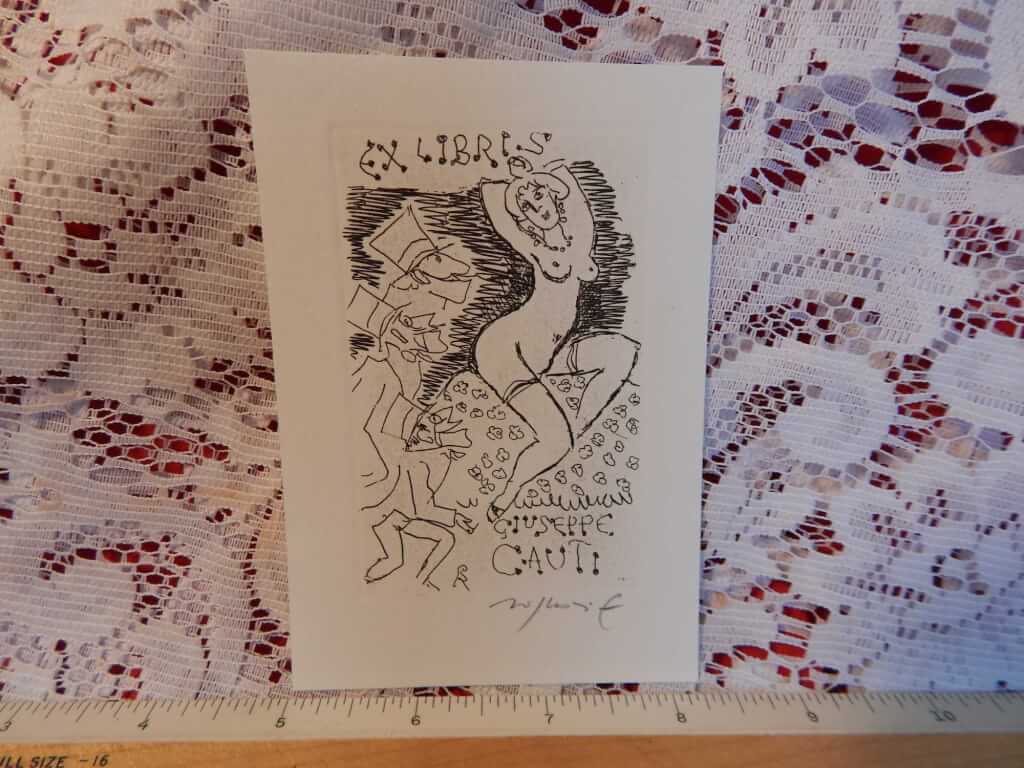 Ex Libris Giuseppe Cauti, by Franco Rognoni purchased from a collection in Italy. Naked woman being admired by men in top hats. Franco Rognoni (1913-1999) was an Italian artist and illustrator
Ex Libris Giuseppe Cauti, by Franco Rognoni purchased from a collection in Italy. Naked woman being admired by men in top hats. Franco Rognoni (1913-1999) was an Italian artist and illustrator -
Out of stock

 Ex Libris Dr. Dzurilikowsky by Krystyna Wojcik purchased from a collection in Italy, "Krystyna Wojcik" written in pencil on back Naked woman's torso combined with an orchid
Ex Libris Dr. Dzurilikowsky by Krystyna Wojcik purchased from a collection in Italy, "Krystyna Wojcik" written in pencil on back Naked woman's torso combined with an orchid -
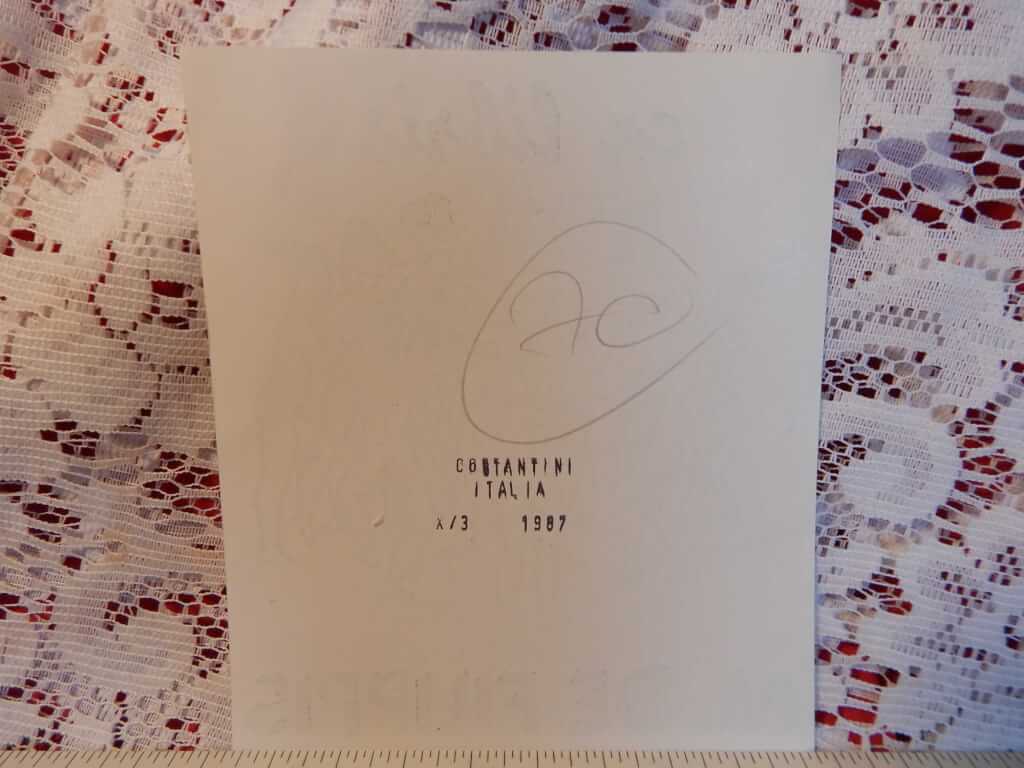
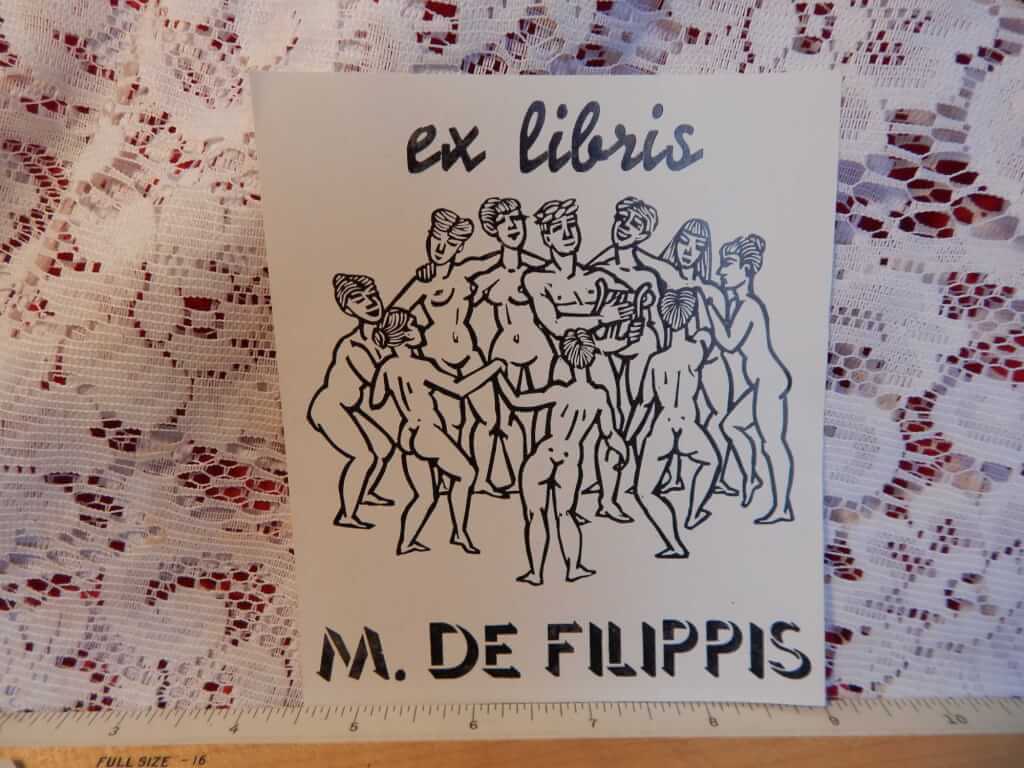 Ex Libris M. De Filippis by Constante Constantini 4.5 x 5.25", purchased from a collection in Italy, "Constantini, Italia, x/3, 1987" stamped on back Naked man playing a harp while naked dancers encircle him. One of the most important (and largest) collections of ex libris in the world belongs to Mario De Filippis, the owner of Buca di San Francesco restaurant in Arezzo Italy. He has over 130,000 ex libris in his collection, approximately 13,000 are personal ex libris plates he's commissioned from artists all over the world using a multitude of printing techniques. His website describes Mario as "a passionate lover of small graphics".
Ex Libris M. De Filippis by Constante Constantini 4.5 x 5.25", purchased from a collection in Italy, "Constantini, Italia, x/3, 1987" stamped on back Naked man playing a harp while naked dancers encircle him. One of the most important (and largest) collections of ex libris in the world belongs to Mario De Filippis, the owner of Buca di San Francesco restaurant in Arezzo Italy. He has over 130,000 ex libris in his collection, approximately 13,000 are personal ex libris plates he's commissioned from artists all over the world using a multitude of printing techniques. His website describes Mario as "a passionate lover of small graphics". -
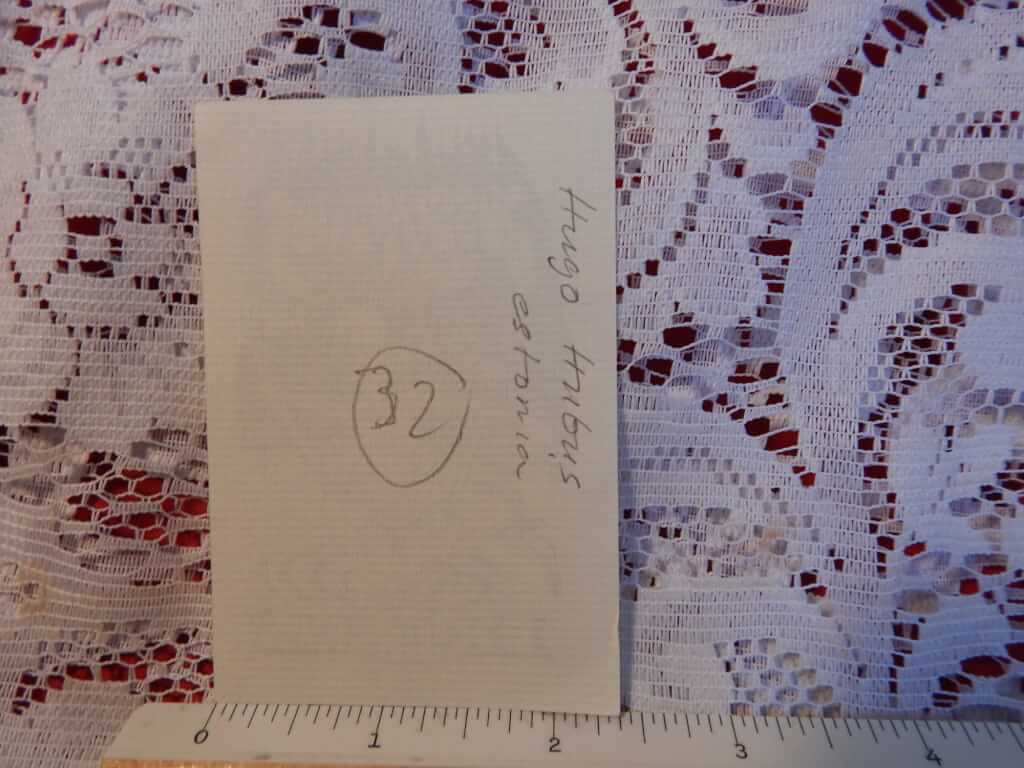
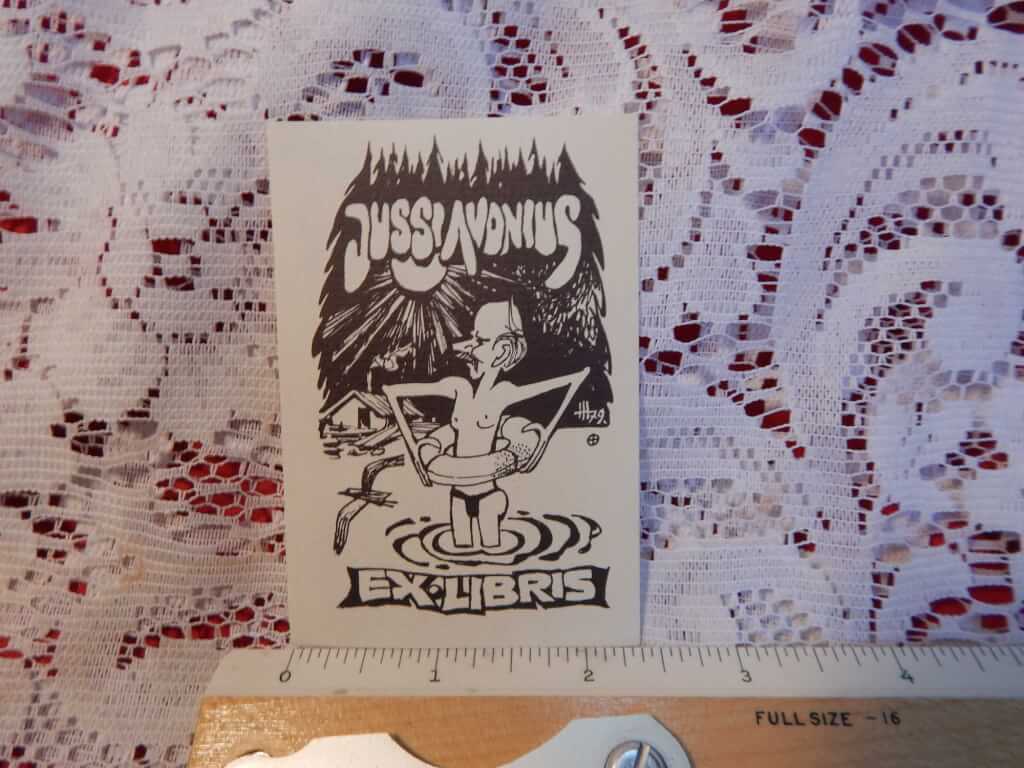 Ex Libris Jussi Avonius, by Hugo Hiibus purchased from a collection in Italy, "Hugo Hiibus | estonia" written on back in pencil Humourous man in knee deep water wearing an lifebuoy/life preserver. Hugo Hiibus (born in 1929) is a popular Estonian cartoonist and personality. He studied at the Estonian State Institute of the Arts, graduating in graphic art. From 1955-1957 he worked in the newspaper People's Voice, and in 1957-1959 in the journal Pikker as an artistic editor. In the years 1972-1984 he worked in the editorial office of the Kodumaa newspaper. He was a member of the ENSV Art Foundation (1961). His first cartoon appeared at the Institute in 1950. Hiibus has been an active exlibris and poster artist and a bookmaker. The cartoons of Hugo Hiibus have been published in almost all editions published in Estonia. Hiibas is both a member of the Estonian Artists' Union (1960) and a Journalist Association (1958). He is also a member of the Board of the Estonian Humor Union.
Ex Libris Jussi Avonius, by Hugo Hiibus purchased from a collection in Italy, "Hugo Hiibus | estonia" written on back in pencil Humourous man in knee deep water wearing an lifebuoy/life preserver. Hugo Hiibus (born in 1929) is a popular Estonian cartoonist and personality. He studied at the Estonian State Institute of the Arts, graduating in graphic art. From 1955-1957 he worked in the newspaper People's Voice, and in 1957-1959 in the journal Pikker as an artistic editor. In the years 1972-1984 he worked in the editorial office of the Kodumaa newspaper. He was a member of the ENSV Art Foundation (1961). His first cartoon appeared at the Institute in 1950. Hiibus has been an active exlibris and poster artist and a bookmaker. The cartoons of Hugo Hiibus have been published in almost all editions published in Estonia. Hiibas is both a member of the Estonian Artists' Union (1960) and a Journalist Association (1958). He is also a member of the Board of the Estonian Humor Union. -
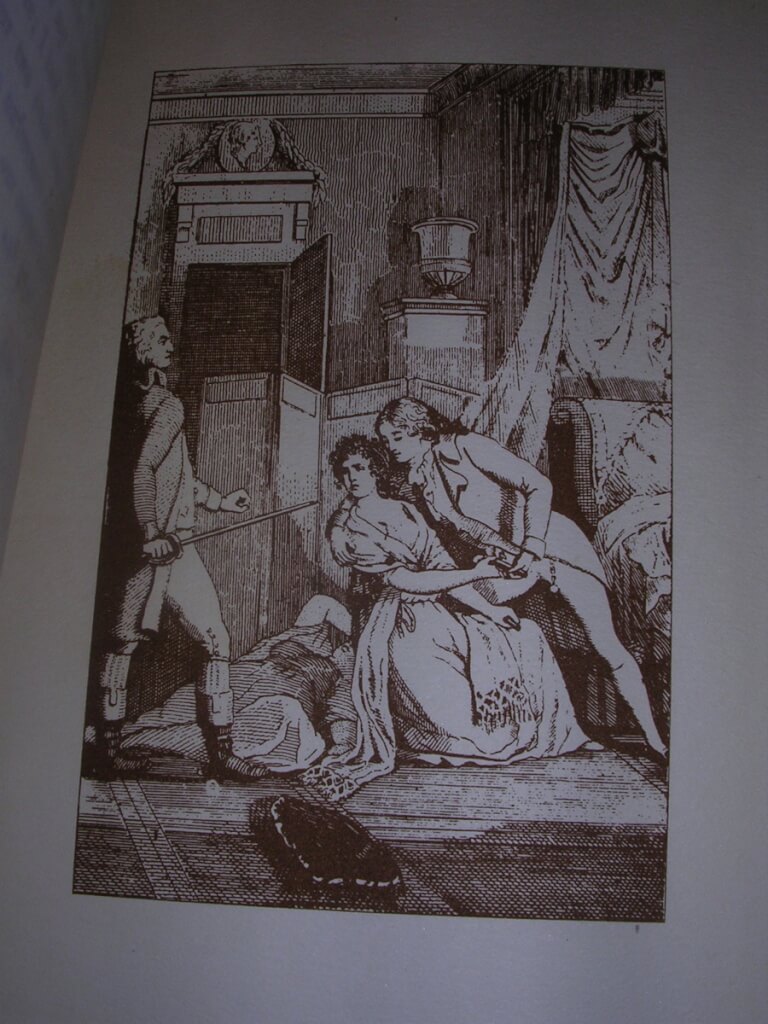
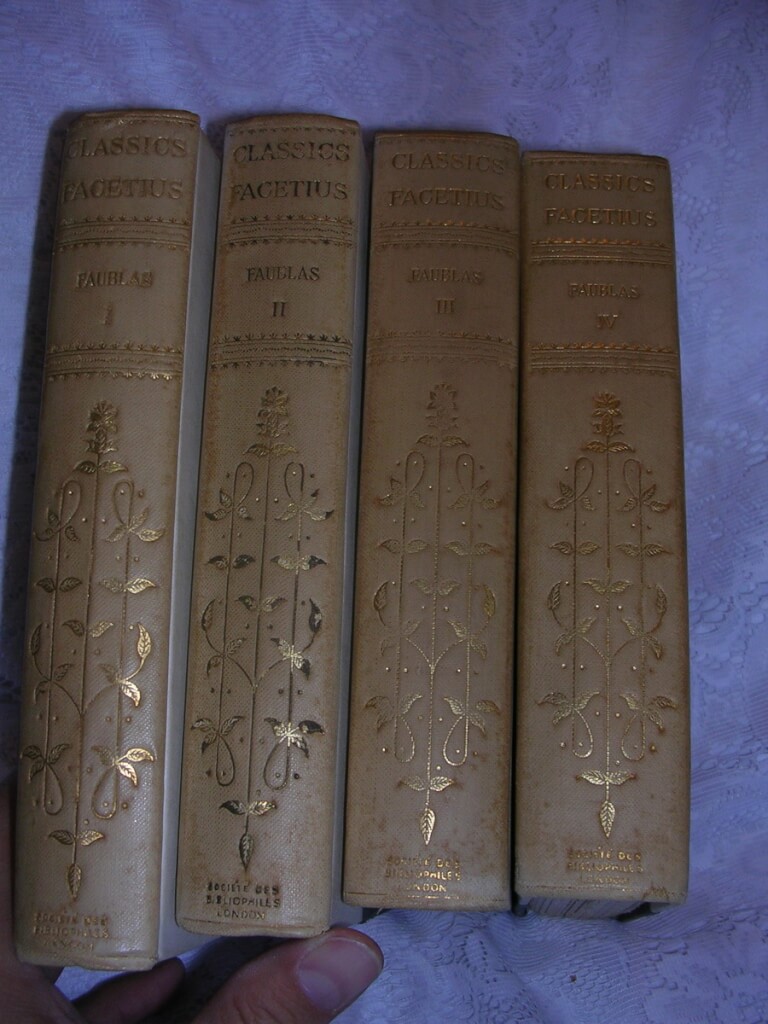 The Amours of the Chevalier de Faublas | by John Baptiste Louvet de Courvray | founded on historical facts, interspersed with most remarkable narratives | a literal unexpurgated translation from the Paris edition of 1821, etchings by Louis Monzies from drawings of Paul Avril (Privately Printed for Société des Bibliophiles [possibly Charles Carrington], London 1898, one of 100, first English translation edition) 5.75"x8.25", 4 volumes, ix+330pp, 367pp, 416pp, 430pp, white spine over green boards, gilt title ("Classics Facetius | Faublas") and decorations on spine, top edge gilt, others deckled, many pages unopened, spine slightly soiled, slight sunning, otherwise in excellent condition for age, numerous illustrations with titled tissue guards. This is the first English translation of this work which, when published was a "sensation" all over Europe. It appears to be published by Charles Carrington, who occasionally used the Société des Bibliophiles imprint and often used illustrations from Paul Avril. Édouard-Henri Avril (1849-1928) used the pseudonym "Paul Avril" for his erotic work. He was a French painter and commercial artist. His career saw collaboration with influential people like Octave Uzanne, Henry Spencer Ashbee and Friedrich Karl Forberg. He is one of the most celebrated erotic artists of his age. Avril was a soldier before starting his career in art. He was awarded with the Legion of Honour for his actions in the Franco-Prussian War. Jean-Baptiste Louvet de Couvrai (1760 - 1797) was born in Paris as the son of a stationer, he became a bookseller's clerk, and first attracted attention with the first part of his novel "Les Amours du chevalier de Faublas" (5 parts) in 1787; it was followed in 1788 by "Six semaines de la vie du chevalier de Faublas" (8 parts) and in 1790 by "La Fin des amours du chevalier de Faublas" (6 parts). The heroine, Lodoiska, was modeled on the wife of a jeweler in the Palais Royal, with whom he had an affair. She divorced her husband in 1792 and married Louvet in 1793. This is considered a so-called "libertine" novel. It dwells mainly on the sexual escapades of its hero, a sort of amiable young libertine, and on the corrupted morals of eighteenth-century France. At the start of this novel the young Chevalier de Faublas attends a party dressed as a woman and is knowingly seduced by the lady of the house ('. I receive with equal astonishment and pleasure a charming lesson, which I repeated more than once .') Oxford Comp. to French Literature says it is "typical of many frivolous, licentious novels of its time, and still mentioned. Faublas, the amiable hero, is the victim of his own charms. His amorous adventures, recounted with a certain lively force, begin with his entry into society at the age of sixteen. He loves several women by the way and three in particular. A jealous husband and a despairing suicide reduce the three to one. The novel ends on a moral note: Faublas , who had happened to settle down with his remaining love, is haunted by the avenging phantoms of the other two and goes mad."
The Amours of the Chevalier de Faublas | by John Baptiste Louvet de Courvray | founded on historical facts, interspersed with most remarkable narratives | a literal unexpurgated translation from the Paris edition of 1821, etchings by Louis Monzies from drawings of Paul Avril (Privately Printed for Société des Bibliophiles [possibly Charles Carrington], London 1898, one of 100, first English translation edition) 5.75"x8.25", 4 volumes, ix+330pp, 367pp, 416pp, 430pp, white spine over green boards, gilt title ("Classics Facetius | Faublas") and decorations on spine, top edge gilt, others deckled, many pages unopened, spine slightly soiled, slight sunning, otherwise in excellent condition for age, numerous illustrations with titled tissue guards. This is the first English translation of this work which, when published was a "sensation" all over Europe. It appears to be published by Charles Carrington, who occasionally used the Société des Bibliophiles imprint and often used illustrations from Paul Avril. Édouard-Henri Avril (1849-1928) used the pseudonym "Paul Avril" for his erotic work. He was a French painter and commercial artist. His career saw collaboration with influential people like Octave Uzanne, Henry Spencer Ashbee and Friedrich Karl Forberg. He is one of the most celebrated erotic artists of his age. Avril was a soldier before starting his career in art. He was awarded with the Legion of Honour for his actions in the Franco-Prussian War. Jean-Baptiste Louvet de Couvrai (1760 - 1797) was born in Paris as the son of a stationer, he became a bookseller's clerk, and first attracted attention with the first part of his novel "Les Amours du chevalier de Faublas" (5 parts) in 1787; it was followed in 1788 by "Six semaines de la vie du chevalier de Faublas" (8 parts) and in 1790 by "La Fin des amours du chevalier de Faublas" (6 parts). The heroine, Lodoiska, was modeled on the wife of a jeweler in the Palais Royal, with whom he had an affair. She divorced her husband in 1792 and married Louvet in 1793. This is considered a so-called "libertine" novel. It dwells mainly on the sexual escapades of its hero, a sort of amiable young libertine, and on the corrupted morals of eighteenth-century France. At the start of this novel the young Chevalier de Faublas attends a party dressed as a woman and is knowingly seduced by the lady of the house ('. I receive with equal astonishment and pleasure a charming lesson, which I repeated more than once .') Oxford Comp. to French Literature says it is "typical of many frivolous, licentious novels of its time, and still mentioned. Faublas, the amiable hero, is the victim of his own charms. His amorous adventures, recounted with a certain lively force, begin with his entry into society at the age of sixteen. He loves several women by the way and three in particular. A jealous husband and a despairing suicide reduce the three to one. The novel ends on a moral note: Faublas , who had happened to settle down with his remaining love, is haunted by the avenging phantoms of the other two and goes mad." -
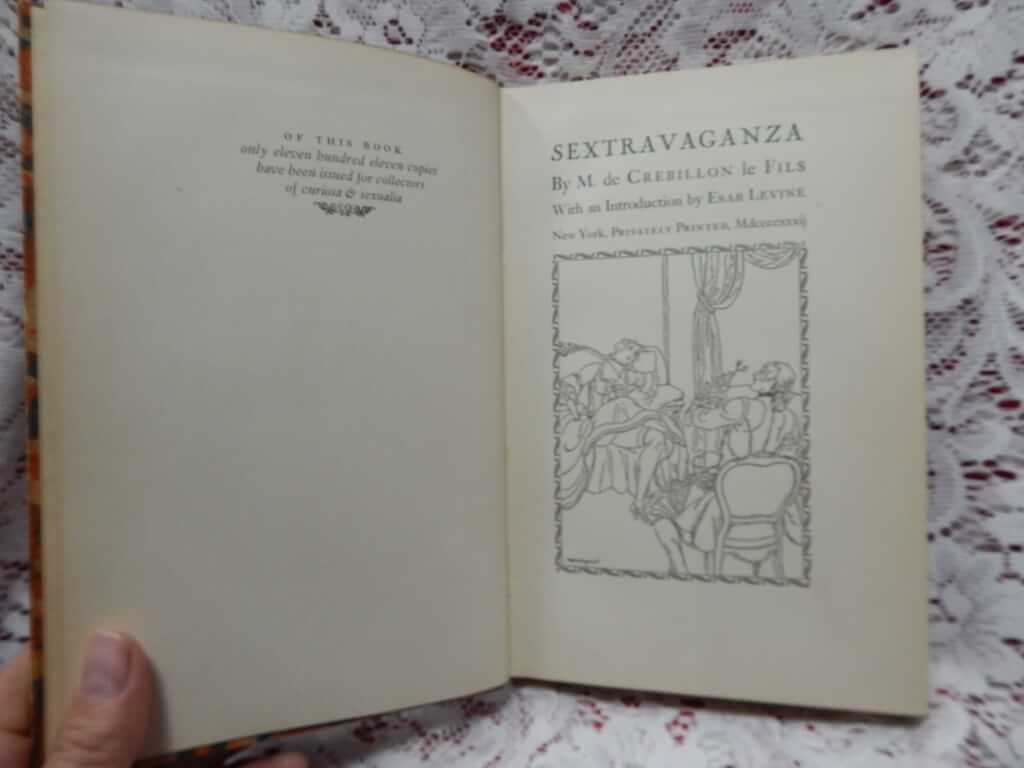
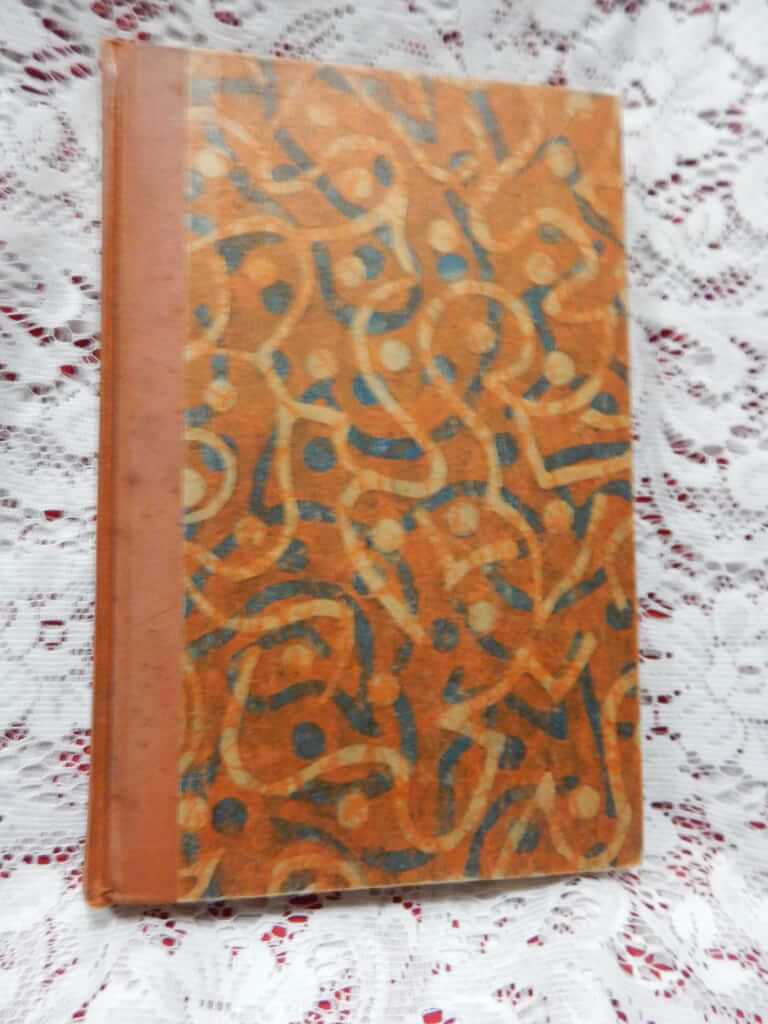 Sextravaganza, by M. de Crebillon le Fils, With and Introduction by Escar Levine, Illustrator unknown (Privately Printed [The Robin Hood House], New York 1932, one of 1111) 6.25"x9.5", 192pp, decorated boards, vellum spine with silver lettering, some spots and bumps but generally a good copy of this edition. Originally titled La Nuit et le moment ou les matines de Cythère [The night and the moment, or the mornings of Cythere], this is Robin Hood House's famous US "private" publication from the 30's and for a long time the only english translation available in the states. Written as a dialog, in the course of one night a man and a woman, each of whom is in love with somebody else, gradually warm up to each other until they forget past pleasures in present passions . Satire, irony, word-play and scandal abound. This edition states "only eleven hundred eleven copies have been issued for collectors of curiosa & sexualia". Claude Prosper Jolyot de Crébillon (1707-1777) was a French novelist. He was called "Crébillon fils" to distinguish him from his father, a famous tragedian, Prosper Jolyot de Crébillon. The publication of Tanzaï et Neadarne, histoire japonaise (1734), which contained thinly veiled attacks on the Papal bull Unigenitus, the cardinal de Rohan and others, landed him briefly in the prison at Vincennes. Publication of Le Sopha, conte moral, an erotic political satire, in 1742 forced him into exile from Paris for several months.
Sextravaganza, by M. de Crebillon le Fils, With and Introduction by Escar Levine, Illustrator unknown (Privately Printed [The Robin Hood House], New York 1932, one of 1111) 6.25"x9.5", 192pp, decorated boards, vellum spine with silver lettering, some spots and bumps but generally a good copy of this edition. Originally titled La Nuit et le moment ou les matines de Cythère [The night and the moment, or the mornings of Cythere], this is Robin Hood House's famous US "private" publication from the 30's and for a long time the only english translation available in the states. Written as a dialog, in the course of one night a man and a woman, each of whom is in love with somebody else, gradually warm up to each other until they forget past pleasures in present passions . Satire, irony, word-play and scandal abound. This edition states "only eleven hundred eleven copies have been issued for collectors of curiosa & sexualia". Claude Prosper Jolyot de Crébillon (1707-1777) was a French novelist. He was called "Crébillon fils" to distinguish him from his father, a famous tragedian, Prosper Jolyot de Crébillon. The publication of Tanzaï et Neadarne, histoire japonaise (1734), which contained thinly veiled attacks on the Papal bull Unigenitus, the cardinal de Rohan and others, landed him briefly in the prison at Vincennes. Publication of Le Sopha, conte moral, an erotic political satire, in 1742 forced him into exile from Paris for several months. -
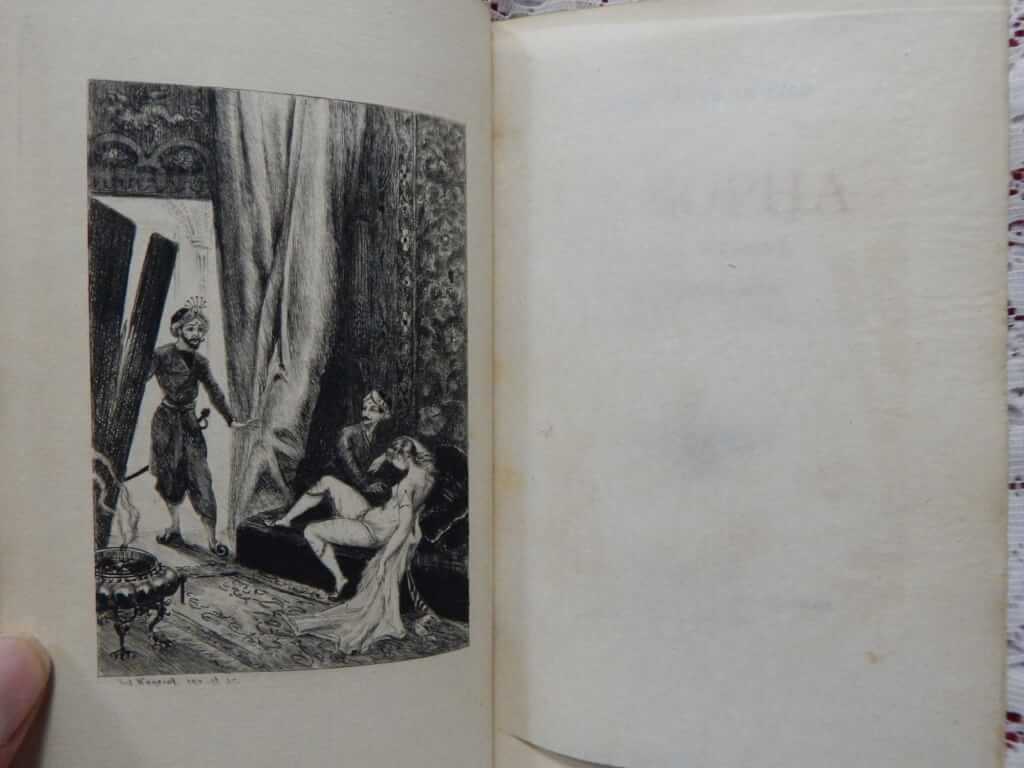
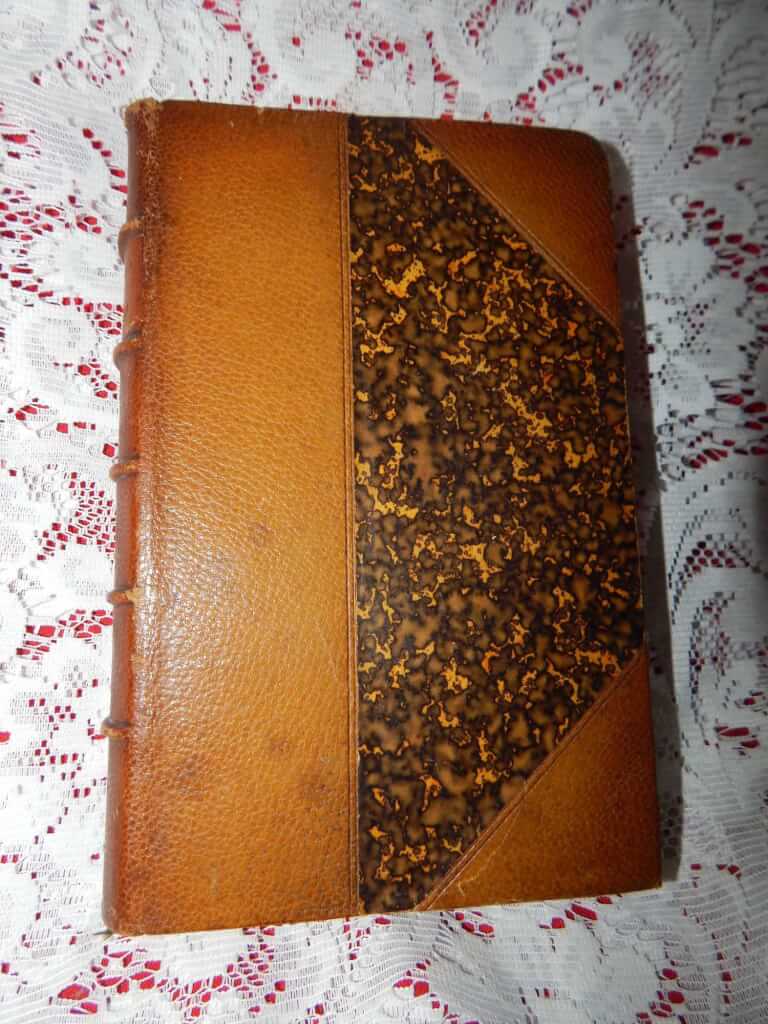 Le Sopha, conte moral by Crébillon fils, illus. Hanriot (Ch. Gilliet, Bruxelles, 1881, #380/550, Imprimerie Clerbaut & Cie.) 5"x7.5", 342pp, 3/4 morocco over marbled boards, 5 raised bands, gilt titles on spine (title worn), marbled endpapers, top-edge gilt, other edges deckled, printed on hand-laid "papier de Hollande", green ribbon intact, frontispiece with tissue guard and 2 small engravings by Hanriot, beautifully bound copy in very good+ condition with delicate engravings Le Sopha, conte moral is a 1742 libertine novel by Claude Prosper Jolyot de Crébillon (Crebillon fils). It was first translated into English in the spring of 1742. The story concerns a young courtier, Amanzéï, whose soul in a previous life was condemned by Brahma to inhabit a series of sofas, and not to be reincarnated in a human body until two virgin lovers had consummated their passion for him. The novel is structured as a frame story in an oriental setting, explicitly evocative of the Arabian Nights, in which Amanzéï recounts the adventures of seven couples, which he witnessed in his sofa form, to the bored sultan Shah Baham (grandson of Shehryār and Scheherazade). The longest episode, that of Zulica, takes up nine chapters; the final episode concerns the teenage Zéïnis et Phéléas. Amanzéï, witnessing their innocent pleasure, is edified and freed through the experience of virtuous love. Many of the characters in the novel are satirical portraits of influential and powerful Parisians of Crébillon’s time; the author takes the opportunity to ridicule hypocrisy in its different forms (worldly respectability, virtue, religious devotion). Claude Prosper Jolyot de Crébillon (1707-1777) was a French novelist. He was called "Crébillon fils" to distinguish him from his father, a famous tragedian, Prosper Jolyot de Crébillon. The publication of Tanzaï et Neadarne, histoire japonaise (1734), which contained thinly veiled attacks on the Papal bull Unigenitus, the cardinal de Rohan and others, landed him briefly in the prison at Vincennes. Although Le Sopha was published anonymously and with a false imprint, Crébillon was discovered to be the author and was exiled to a distance of thirty leagues from Paris on April 7, 1742. He was able to return on July 22, after claiming that the work had been commissioned by Frederick II of Prussia and that it had been published against his will. Jules-Armand Hanriot (1853-1930) was a French painter, engraver and illustrator.
Le Sopha, conte moral by Crébillon fils, illus. Hanriot (Ch. Gilliet, Bruxelles, 1881, #380/550, Imprimerie Clerbaut & Cie.) 5"x7.5", 342pp, 3/4 morocco over marbled boards, 5 raised bands, gilt titles on spine (title worn), marbled endpapers, top-edge gilt, other edges deckled, printed on hand-laid "papier de Hollande", green ribbon intact, frontispiece with tissue guard and 2 small engravings by Hanriot, beautifully bound copy in very good+ condition with delicate engravings Le Sopha, conte moral is a 1742 libertine novel by Claude Prosper Jolyot de Crébillon (Crebillon fils). It was first translated into English in the spring of 1742. The story concerns a young courtier, Amanzéï, whose soul in a previous life was condemned by Brahma to inhabit a series of sofas, and not to be reincarnated in a human body until two virgin lovers had consummated their passion for him. The novel is structured as a frame story in an oriental setting, explicitly evocative of the Arabian Nights, in which Amanzéï recounts the adventures of seven couples, which he witnessed in his sofa form, to the bored sultan Shah Baham (grandson of Shehryār and Scheherazade). The longest episode, that of Zulica, takes up nine chapters; the final episode concerns the teenage Zéïnis et Phéléas. Amanzéï, witnessing their innocent pleasure, is edified and freed through the experience of virtuous love. Many of the characters in the novel are satirical portraits of influential and powerful Parisians of Crébillon’s time; the author takes the opportunity to ridicule hypocrisy in its different forms (worldly respectability, virtue, religious devotion). Claude Prosper Jolyot de Crébillon (1707-1777) was a French novelist. He was called "Crébillon fils" to distinguish him from his father, a famous tragedian, Prosper Jolyot de Crébillon. The publication of Tanzaï et Neadarne, histoire japonaise (1734), which contained thinly veiled attacks on the Papal bull Unigenitus, the cardinal de Rohan and others, landed him briefly in the prison at Vincennes. Although Le Sopha was published anonymously and with a false imprint, Crébillon was discovered to be the author and was exiled to a distance of thirty leagues from Paris on April 7, 1742. He was able to return on July 22, after claiming that the work had been commissioned by Frederick II of Prussia and that it had been published against his will. Jules-Armand Hanriot (1853-1930) was a French painter, engraver and illustrator. -

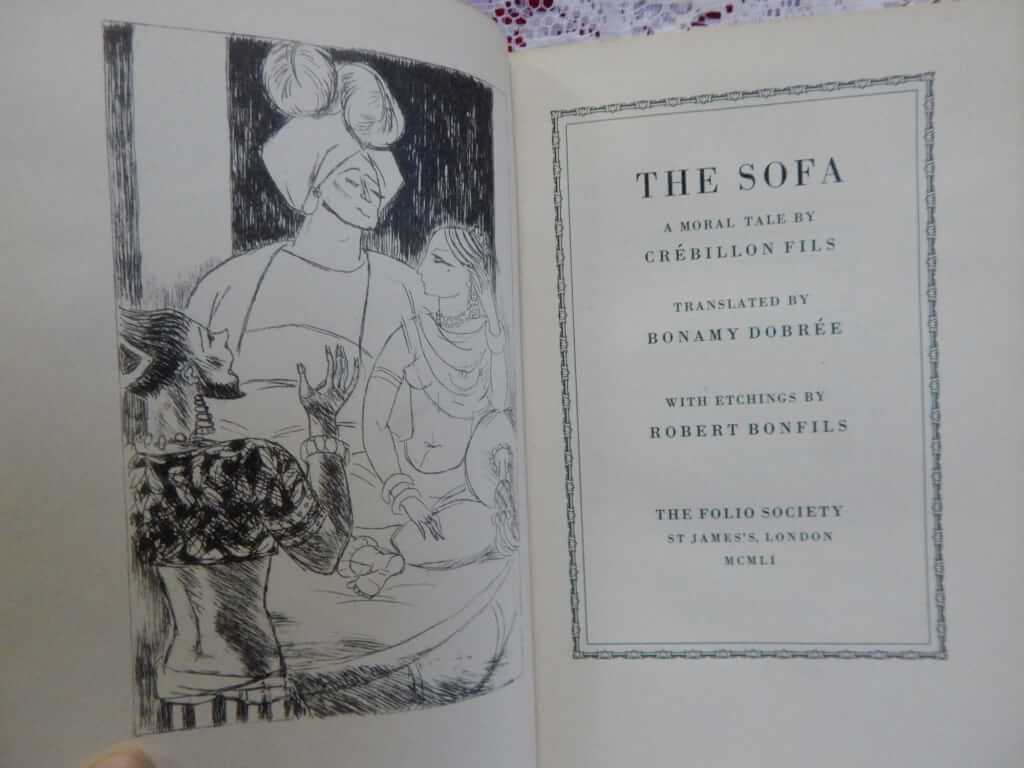 The Sofa, a moral tale by Crébillon fils, trans. Bonamy Dobrée, illus. Robert Bonfils (The Folio Society, St. James's, London, 1951) 6.75"x9.25", v+256, red boards with silver gilt decorations on spine, spine only slightly sunned, slipcase The Sofa: A Moral Tale (French: Le Sopha, conte moral) is a 1742 libertine novel by Claude Prosper Jolyot de Crébillon (Crebillon fils). It was first translated into English in the spring of 1742. The story concerns a young courtier, Amanzéï, whose soul in a previous life was condemned by Brahma to inhabit a series of sofas, and not to be reincarnated in a human body until two virgin lovers had consummated their passion for him. The novel is structured as a frame story in an oriental setting, explicitly evocative of the Arabian Nights, in which Amanzéï recounts the adventures of seven couples, which he witnessed in his sofa form, to the bored sultan Shah Baham (grandson of Shehryār and Scheherazade). The longest episode, that of Zulica, takes up nine chapters; the final episode concerns the teenage Zéïnis et Phéléas. Amanzéï, witnessing their innocent pleasure, is edified and freed through the experience of virtuous love. Many of the characters in the novel are satirical portraits of influential and powerful Parisians of Crébillon’s time; the author takes the opportunity to ridicule hypocrisy in its different forms (worldly respectability, virtue, religious devotion). Although the book was published anonymously and with a false imprint, Crébillon was discovered to be the author and was exiled to a distance of thirty leagues from Paris on April 7, 1742. He was able to return on July 22, after claiming that the work had been commissioned by Frederick II of Prussia and that it had been published against his will. Robert Bonfils started his illustration career in Chicago in the mid fifties, doing various commercial art assignments such as advertisements, lunch box decorations, catalog illustrations, magazine covers, interior story illustrations, record jacket covers, and book covers. He is best known for his covers for erotic, pulp fiction paperbacks.
The Sofa, a moral tale by Crébillon fils, trans. Bonamy Dobrée, illus. Robert Bonfils (The Folio Society, St. James's, London, 1951) 6.75"x9.25", v+256, red boards with silver gilt decorations on spine, spine only slightly sunned, slipcase The Sofa: A Moral Tale (French: Le Sopha, conte moral) is a 1742 libertine novel by Claude Prosper Jolyot de Crébillon (Crebillon fils). It was first translated into English in the spring of 1742. The story concerns a young courtier, Amanzéï, whose soul in a previous life was condemned by Brahma to inhabit a series of sofas, and not to be reincarnated in a human body until two virgin lovers had consummated their passion for him. The novel is structured as a frame story in an oriental setting, explicitly evocative of the Arabian Nights, in which Amanzéï recounts the adventures of seven couples, which he witnessed in his sofa form, to the bored sultan Shah Baham (grandson of Shehryār and Scheherazade). The longest episode, that of Zulica, takes up nine chapters; the final episode concerns the teenage Zéïnis et Phéléas. Amanzéï, witnessing their innocent pleasure, is edified and freed through the experience of virtuous love. Many of the characters in the novel are satirical portraits of influential and powerful Parisians of Crébillon’s time; the author takes the opportunity to ridicule hypocrisy in its different forms (worldly respectability, virtue, religious devotion). Although the book was published anonymously and with a false imprint, Crébillon was discovered to be the author and was exiled to a distance of thirty leagues from Paris on April 7, 1742. He was able to return on July 22, after claiming that the work had been commissioned by Frederick II of Prussia and that it had been published against his will. Robert Bonfils started his illustration career in Chicago in the mid fifties, doing various commercial art assignments such as advertisements, lunch box decorations, catalog illustrations, magazine covers, interior story illustrations, record jacket covers, and book covers. He is best known for his covers for erotic, pulp fiction paperbacks. -

 Casanova's Memoirs, by Casanova, Ed. Joseph Monét, illus. Vincente Minnilli (Willey Book Company, New York, 1946) 6.25"x9.25", 290pp, mylar protected DJ with some rips and tears over red boards with gilt lettering, boards loose but holding Giovanni Giacomo Casanova (1725-1798) was an ecclesiastic, writer, soldier, spy, and diplomatist, chiefly remembered as the prince of Italian adventurers and as the man who made the name Casanova synonymous with "libertine." His autobiography, which perhaps exaggerates some of his escapades, is a splendid description of 18th-century society in the capitals of Europe. As far as I can tell this is the only illustration work done by Vincente Minnelli [obscure at the time but later famous director and husband of Judy Garland]. It was done soon after he moved to New York from Chicago and before he landed a steady job at Radio City Music Hall. In his autobiography he described the work as "in the Aubrey Beardsley style".
Casanova's Memoirs, by Casanova, Ed. Joseph Monét, illus. Vincente Minnilli (Willey Book Company, New York, 1946) 6.25"x9.25", 290pp, mylar protected DJ with some rips and tears over red boards with gilt lettering, boards loose but holding Giovanni Giacomo Casanova (1725-1798) was an ecclesiastic, writer, soldier, spy, and diplomatist, chiefly remembered as the prince of Italian adventurers and as the man who made the name Casanova synonymous with "libertine." His autobiography, which perhaps exaggerates some of his escapades, is a splendid description of 18th-century society in the capitals of Europe. As far as I can tell this is the only illustration work done by Vincente Minnelli [obscure at the time but later famous director and husband of Judy Garland]. It was done soon after he moved to New York from Chicago and before he landed a steady job at Radio City Music Hall. In his autobiography he described the work as "in the Aubrey Beardsley style".












